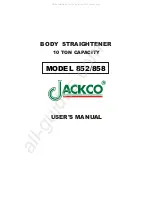
User Manual
Ramp
A feature that may increase patient comfort when therapy is started.
The ramp feature reduces the pressure and then gradually increases
(ramps) the pressure to the prescription setting, so you can fall asleep
more comfortably.
Respiratory Rate (RR)
The patient’s rate of respiration.
Rise Time
The time it takes for the device to change from EPAP to IPAP. You can
adjust this time for your comfort.
Spontaneous (S)
This is a bi-level mode which responds to both your inhalation and
exhalation by increasing pressure when you start to inhale and decreasing
pressure when you start to exhale. There is no automatic delivery of a
breath if you do not inhale.
Spontaneous/Timed
(S/T)
This is an optional bi-level mode which responds to both your
inhalation and exhalation by increasing pressure when you start to
inhale and decreasing pressure when you start to exhale. If you do
not start inhaling within a set time, the device automatically starts
inhalation. When the device starts inhalation, it controls the time
of inhalation and automatically decreases the pressure for exhalation
within a set time.
Standby State
The state of the device when the device is on, but the airflow is off.
Tidal Volume (V
T
)
The volume of each breath.
Timed (T)
This is an optional bi-level mode in which the device controls both
inhalation and exhalation independent of spontaneous breathing.
3.2
W
hat
is
B
i
-
level
v
entilation
?
Bi-level ventilation with the device helps you to breathe by supplying two levels of air pressure. The device
provides a higher pressure—known as IPAP (Inspiratory Positive Airway Pressure)—when you inhale, and
a lower pressure—known as EPAP (Expiratory Positive Airway Pressure)—when you exhale. The higher
pressure makes it easier for you to inhale, and the lower pressure makes it easier for you to exhale.
IPAP
Pressure
EPAP
Pressure
Rise Time
Time
Figure – IPAP and EPAP Breathing Levels
You can adjust the Rise Time to make the pressure change more comfortable.
The device can also provide a single pressure level, known as CPAP (Continuous Positive Airway Pressure).
Summary of Contents for BiPAP AVAPS
Page 1: ...BiPAP AVAPS TM User Manual ...
Page 48: ...1048888 JR 9 20 07 ...











































